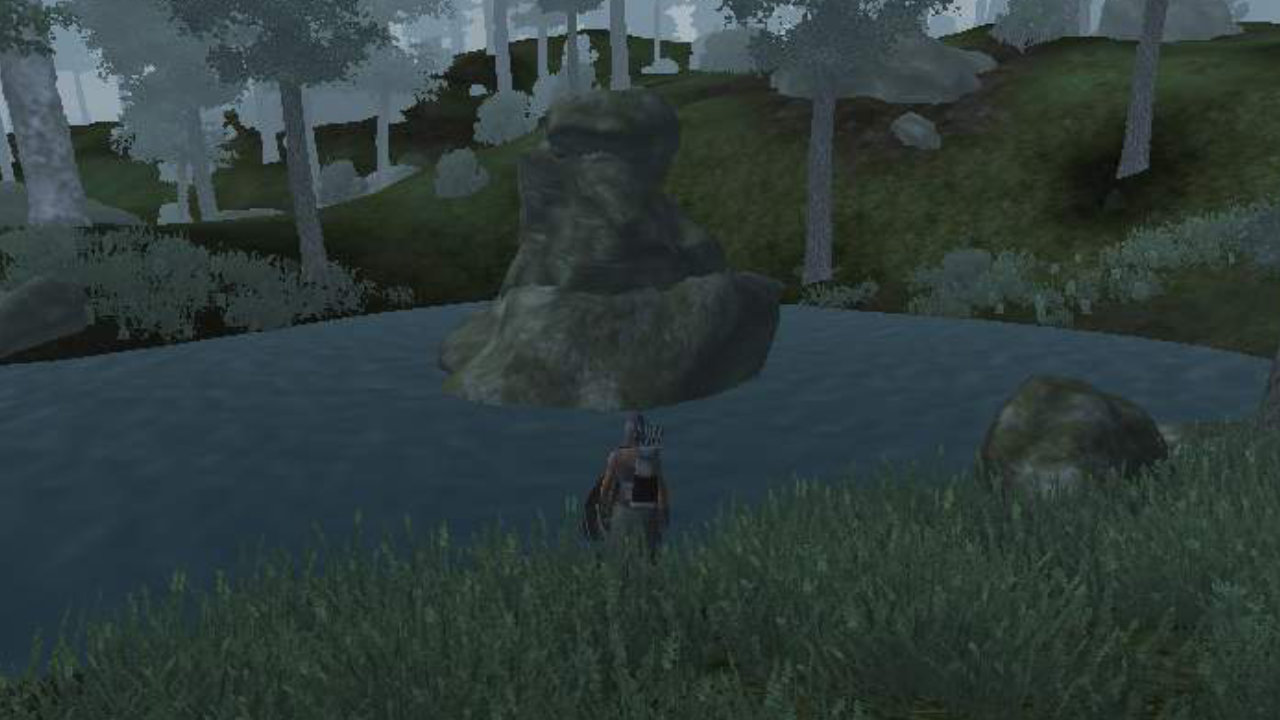Oblivion Performance Hints, Tips and FPS Tweaks
Elder Scroll: Oblivion is quite a taxing game on computers, especially when traveling around out doors, all those trees and grass add up to Oblivion being quite an ‘expensive’ game to run. However, there are a number of tricks, tweaks and tips that can be used to increase performance on lower spec’d machine, obviously at the expense of the great visual experience and toned (turned) down graphics.
Showing Oblivion’s FPS and the in-game console
First turn on Oblivion’s show/hide console command;
bAllowConsole=1
This will toggle the appearance of the console whilst in-game when pressing the ‘~’ key – if you’re in the UK it’s actually the ‘¬’ key which sits to the left of the number ‘1’ and not our ‘~’ key; this will show or hide Oblivion’s in game console for the PC version of the game.
Morrowind’s command of "show FPS=0/1" doesn’t work in Oblivion so to display the games FPS using the engine rather than an external application like Fraps or ATI Tray Tools, type the following command into the console (hit the ’tilde’ key, ‘~’, to access the console);
tdt
After typing this command blocks of text will appear on both the left and right hand side of the screen, the FPS for Oblivion is on the upper right side.
[addendum] Note : if you use the "tdt" console command above after installing the current 1.1 patch for Oblivion you’ll find that instead of just the few lines of FPS related debugging text that it’ll now list a huge chunk of text to do with texture and assets paths as the game parses them into memory. This blocks from view pretty much the whole left hand side of the screen when in the small resolutions. As it’s part of the ‘debugging’ facility of the game itself, it doesn’t appear that it can’t be disabled from being shown.
Basic Oblivion FPS tweaks
Some common settings to edit in the Oblivion.ini file to change the way the game looks or to get slightly better performance. Gains will vary depending on whether you’re inside a town, building or out in the open.
-
bDoDiffusePass=1(negligible effect)
Setting to ‘0’ remove highlights created by light sources, basically ‘flattens’ the appearance of everything in game -
bDoSpecularPass=1(noticeable effect)
Setting to ‘0’ removes the shiny (specular) highlights (see update above regarding the use of this tweak)WARNING : Be careful using the bDoSpecularPass=0/1 performance tweak, it can cause Oblivion to fast crash back to the desktop when in certain areas; Skingrad Castle courtyard for one.
Disabling dDoSpecularPass also appear to be responsible (in whole or in part) for terrain not being effected by fog weather effects; this is where objects in the world – trees, plants, buildings etc. – appear correctly fogged, but the ground surface doesn’t, giving the other objects a sort of ‘milky’ appearance.
For now, it’s probably best to leave dDoSpecularPass at it’s default setting of ‘1’ (specular highlights enabled).
-
bDoTexturePass=1(noticeable effect)
Setting to ‘0’ remove the ‘colour’ from the world creating what’s known as a ‘clay render’ – everything in the world is rendered relative to a flat gray-white base. More noticeable effect on performance in indoor environments. -
bDoAmbientPass=1(results in game crash)
Setting to ‘0’ crashes the game. -
bDrawShadows=1(negligible effect)
Setting to ‘0’ disable shadows
Additional Performance tweaks for Oblivion – grass
There’s no two ways about this if you’re wanting to play Oblivion with a decent frame rate; grass has to be turned off. Because of the way it’s rendered by the engine it’s incredibly ‘expensive’ and resource hungry. So whilst turning it of from the in-game menu means running around a fairly bare terrain in Oblivion, the FPS boost had at it’s expense means that it should be something considered, especially for those on older hardware.
If you don’t want to do that, a couple of settings can be used to limit the ‘damage’ done by Oblivion’s grass;
fGrassWindMagnitudeMax=0.0000
fGrassWindMagnitudeMinimum=0.0000
These above two values will turn off grass animation (shader based polygon distortion) so it no longer moves.
You can additional set…
iMinGrassSize=[value]
… to reduce the amount of grass rendered per area; it essentially reduces the density – how thickly Oblivion’s grass placed – rather than the overall amount.





